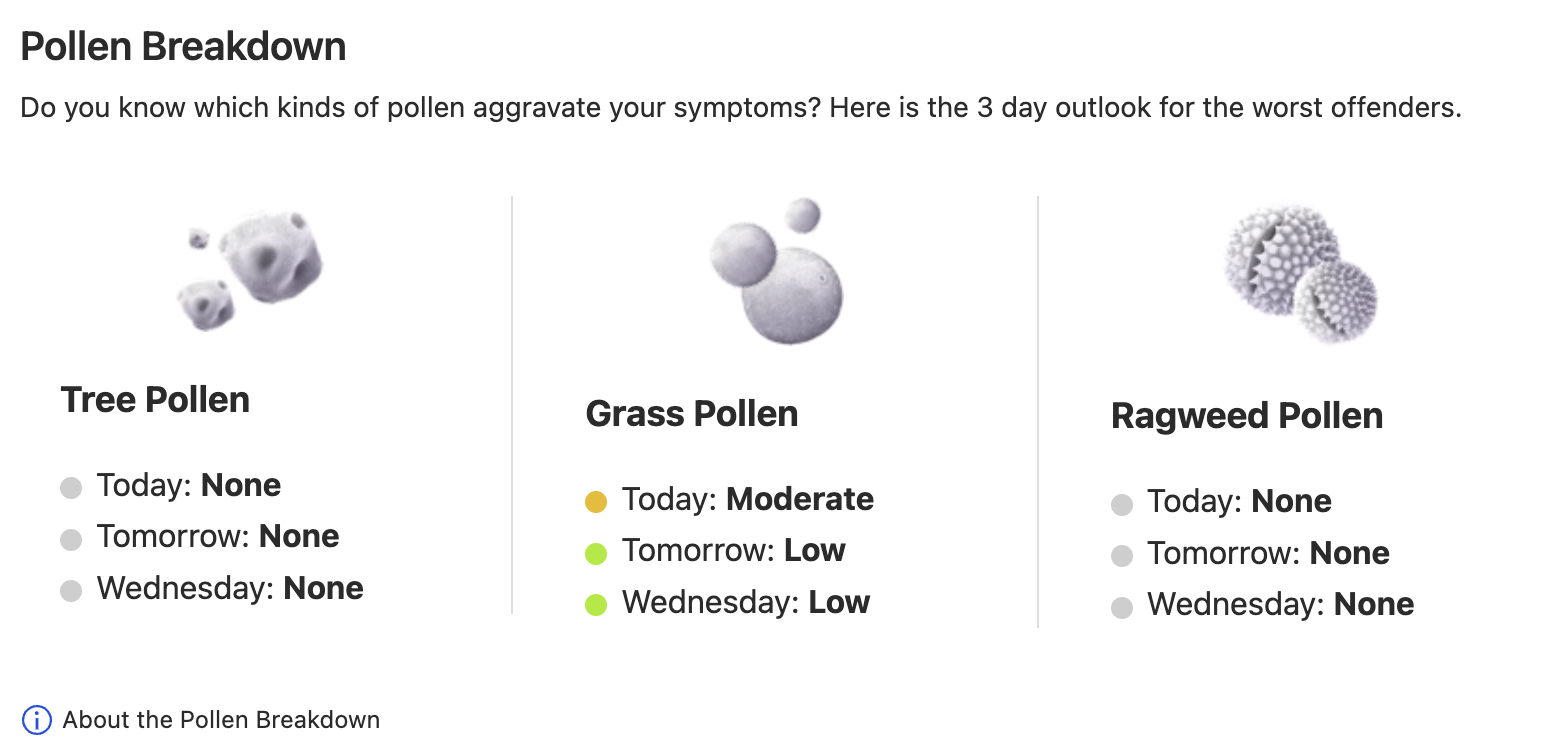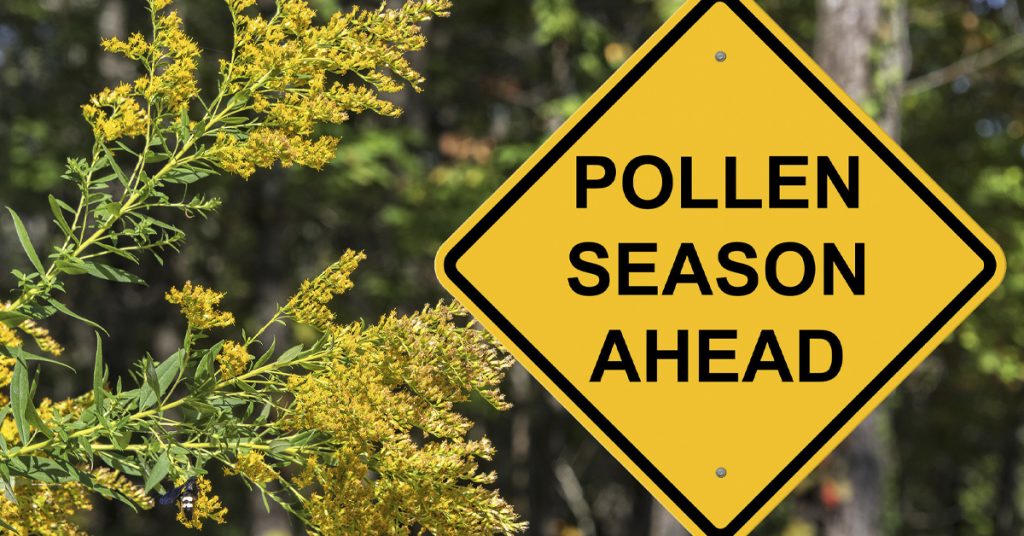Weather.com offers more than just fodder for your next conversation. The popular weather website gives allergy and asthma sufferers an “allergy forecast” based on expected weather conditions and local pollen counts.
Pollen is a powdery substance that some trees and plants produce as part of their reproduction process. In turn, pollen count is a measurement of how much pollen is in the air. Weather.com outlines pollen count breakdowns by the most common pollen types — tree, grass and ragweed — while its rival site accuweather.com adds mold and dust & dander. Both weather.com and accuweather.com offer pollen data and insight under “health & activities.”

Gathering spores and allergy insight
Certified agencies and allergy clinics across the United States collect pollen samples using rooftop instruments over a 24-hour period. They then send the collected spores to labs for analysis, which share data with the National Allergy Bureau™. The NAB™ is the nation’s only pollen and mold counting network certified by the American Academy of Allergy, Asthma & Immunology (AAAAI). You can save the Minneapolis “counter station” with a tool on the NAB website called “My NAB” and receive notification emails when pollen levels change at the station.
Many people in our area love to be outside and active. If you suffer from allergies, it helps to be aware of pollen counts before you pursue your favorite outdoor adventures and to know how the weather affects them. According to the Minnesota Department of Health, the state has three pollen seasons:
- Trees – Beginning in early April and ending in late-May
- Grasses – Starting in early June and ending in July
- Weeds – Starting in mid-June and continuing through the first hard frost (Note: Ragweed is present from early-August through mid-October)
Generally, in the Twin Cities metro area, trees have the highest pollen levels, then weeds and grasses. Pollen counts tend to be highest beginning at midday. Ragweed pollen peaks around noon, while grass pollen is often highest later in the afternoon. If you’d like to know which specific allergens cause you the most problems, Oakdale ENT offers comprehensive diagnostics and treatment options.
Understanding the effect of weather on pollen
Pollen counts can be higher or lower depending on the weather. For example, rain can weigh down pollen, which can lessen your allergies initially. But if there is wind that follows the storm, watch out! Raindrops can dissect pollen clumps and send more pollen into the air as the rain and storm dissipate. And if it’s dry and windy, it’s more likely the pollen will ride the wind right into your nose and mouth.
Differentiating between pollen count levels
Pollen counts are usually designated on a spectrum from low to high. A high pollen count means that most people with any sensitivity to pollen and molds are likely to experience symptoms such as itchy and watery eyes, congestion and sneezing. Meanwhile, a very high pollen count signals that nearly every person who has any sensitivity to pollen and molds will have symptoms. In contrast, a low pollen count means that only people who are extremely sensitive to pollen and mold will be symptomatic.
Reducing allergy symptoms
In addition to minding the weather and allergy forecasts, there are other tips to lessen allergies:
- Remove and wash any clothing that might have pollen on it. Pollen can stick to your clothes.
- Shower before bed. If you’ve been outside for a good part of the day when the pollen count is high, it’s a good idea to shower before bed. Pollen can stick to your hair, clothes and skin so it’s a good idea to wash it off so it doesn’t get onto your bed
- Close your door and windows. This will lower the amount of pollen that gets inside your home.
- Use a HEPA filter vacuum cleaner and air purifiers. This helps clear pollen that does get inside.
- Keep your home clean. Dust can trap and contain pollen.
Again, if you’d like to better understand the seasonal allergens that most affect you, contact Oakdale ENT at 763-233-5755.
